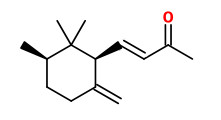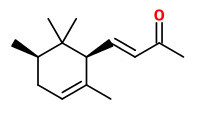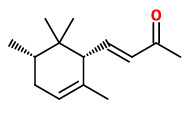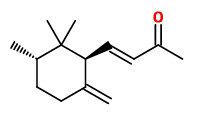Dies ist eine alte Version des Dokuments!
Iris pallida Lam. - Iridaceae - Dalmatian iris, Bleiche Schwertlilie, Dalmatinische Iris
Perennial native to the Dalmatian coast (Croatia), widely naturalized; cultivated as a garden plant, and commercially to produce essential oils from its rhizome.
„Iris pallida is considered to be one of the parents of I. germanica, to which it contributed blue pigment (delphinin) as well as the recessive white allele responsible for white-flowered forms. It also contributed the recessive distribution-pattern allele that limits the blue pigment to veins and to stipples or larger dots along the margins of the petals and sepals, the plicata pattern so popular in the garden today.“ http://www.efloras.org/florataxon.aspx?flora_id=1&taxon_id=200028194
Two main varieties of iris are used in perfumery, Iris pallida and Iris germanica. As the quantity of irones determines the value of the extract, Iris pallida from Italy with 0.4 g of pure irones per kg of dry rhizomes ist still the reference. Global production of iris rhizomes is estimated to be about 300t (approximate quantities Italy 25-30t, France 40t, Morocco 80-100t, China 100t, Balkans 50t mainly Macedonia). 100kg of rhizome powder gives roughly 200g of butter (essential oil) which gives 40g of absolute (world market of orris absolute is around 50kg).
[Biolandes 2017] https://www.biolandes.com/en-biolandes-iris-book.php?voyage=o&lg=en
„The racemates of all irone isomers (cis-α, trans-α, β, cis-γ, trans-γ) have been resolved by chiral capillary gas chromatography and the separated pure enantiomers have been olfactorily characterized by using GC-sniffing techniques. (+)-cis-γ-Irone and (+)-cis-α-irone were found to have the most interesting organoleptic properties.“
Regarding industrially-produced orris oil of I.pallida, (-)-cis-α-irone (61.5%), (-)-cis-γ-irone (37.6%), (+)-trans-α-irone (0.9%), and β-irone (0.7%) were found.
[Direct enantioselective separation and olfactory evaluation of all irone isomers., Galfré, A., Martin, P., Petrzilka, M., Journal of Essential Oil Research, 5(3), 1993, 265-277]
„We also had in our hands all ten pure stereoisomers of irones. Only (-)-cis-α-irone (2S,6R) and (-)-trans-γ-irone (2S,6S) were found to possess the delicate and characteristic scent of orris butter, though the other irone samples were also described to smell pleasant of violet and woody notes.“
[Abate, A., Brenna E., Fugant C., Gatti, FG, Serra S. „Odor and (Bio)diversity: Single Enantiomers of Chiral Fragrant Substances“, in: Kraft, P., Swift KAD, Perspectives in flavor and fragrance research. John Wiley & Sons, 2005, 55-65]
Orris root oil or „orris butter“, produced by steam distillation of the grounded and carefully dried rhizomes, has a buttery nature because of various amounts of methyl and ethyl myristate. The typical odor of the oil (violet, floral, woody) is attributed to the irones, which are structurally related to the ionones. (of violet oil). Main constituents are (+)-cis-α-irone (39%), (-)-trans-α-irone (16%), (+)-β-irone (2%), (+)-cis-γ-irone (43%), with trace amounts of (+)-trans-γ-irone.
[Scent and Chemistry, Günther Ohloff, Wilhelm Pickenhagen, Philip Kraft, Wiley-VCH, 2012, 281-284]

Köhler, F.E., Medizinal Pflanzen, vol.2, t.922 (1890)
http://plantgenera.org/species.php?id_species=558771

Iris pallida Lam. © Dipartimento di Scienze della Vita, Università degli Studi di Trieste
Comune di Trieste, centro città, Civico Orto Botanico, TS, Friuli Venezia Giulia, Italia, 08/05/2013
picture by Andrea Moro CC BY-SA 4.0, http://dbiodbs.units.it/carso/chiavi_pub26?spez=13770




